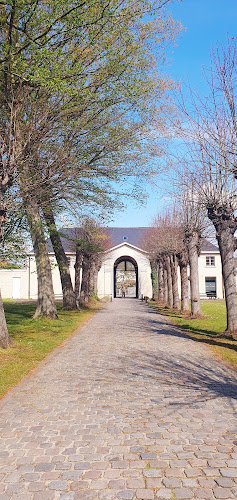
Tuchthuis
About Tuchthuis
Description
Step into a slice of Dutch history at the Tuchthuis, a former correctional facility that now stands as a fascinating testament to the Netherlands' justice system through the ages. I gotta tell you, this place really left an impression on me during my visit - it's not your typical tourist spot, and that's exactly what makes it so intriguing. Built in the 18th century, this imposing structure served as a house of correction where inmates were put to work spinning wool and weaving cloth (hence the name "Tuchthuis" or "House of Discipline"). Walking through these historic halls, you can almost hear the echoes of the past. The architecture alone tells quite a story - those thick walls and iron-barred windows aren't just for show, ya know? But what really gets me is how this place has been preserved and transformed. Today, it's become this amazing cultural landmark that offers visitors a unique glimpse into historical Dutch law enforcement and social reform.Key Features
• Original 18th-century architecture with distinctive Dutch baroque elements • Historic cell blocks that showcase period-accurate detention conditions • Exhibition spaces featuring artifacts from the building's operational years • Preserved workshop areas where inmates once labored • Architectural details including the original iron-barred windows and heavy wooden doors • Educational displays explaining the facility's role in Dutch criminal justice history • Notable architectural features like the central courtyard and guard towers • Period-specific furniture and equipment from its time as a working prisonBest Time to Visit
From my experience, the sweet spot for checking out the Tuchthuis is during spring or early fall. The weather's usually pretty decent then, and you won't have to deal with summer crowds or winter's bite. I'd say weekday mornings are your best bet - that's when you can really soak in the atmosphere without too many other folks around. But here's a pro tip: some of the most interesting visits happen during special events or themed exhibitions they put on throughout the year. These often bring the building's history to life in ways you just can't experience during a regular visit. And if you're into photography like me, the lighting during early morning hours creates some pretty dramatic shadows through those historic windows.How to Get There
Getting to the Tuchthuis is actually pretty straightforward. If you're coming by public transport, you can hop on a train to the nearest station and then it's just a short walk away. For those driving (which is what I usually do), there's parking available nearby, though you might need to circle around a bit during peak times. The building's hard to miss once you're in the area - just look for that impressive historical facade. I remember getting a bit turned around my first time, but honestly, that's part of the fun of exploring these historical Dutch towns. Most locals know the place well and are happy to point you in the right direction if needed.Tips for Visiting
Alright, let me share some insider tips that'll make your visit way better (wish someone had told me these before my first visit!). First off, wear comfortable shoes - those old stone floors can be pretty unforgiving, and there's more walking than you might expect. Bring a camera! The lighting and architecture make for some amazing shots, especially if you're into historical photography. But remember, some areas might have photography restrictions, so always check first. I'd recommend setting aside at least 1.5 to 2 hours for your visit. Trust me, you'll want the time to really explore and take everything in. The guided tours are totally worth it if they're available - the guides usually have these fascinating stories that aren't in any guidebook. Oh, and here's something I learned the hard way: the building can get pretty chilly, even in summer. Those thick stone walls keep things cool, so maybe bring an extra layer just in case. If you're interested in the historical aspects, take some time to read the information panels - they've got some pretty wild stories about the building's past that'll make your visit way more meaningful. And don't forget to check their website before you go - sometimes they have special exhibitions or events that you won't want to miss. Last but not least, try visiting during off-peak hours if possible. The place hits different when you can explore at your own pace without crowds. And seriously, don't skip the courtyard - it's one of those spots where you can really feel the weight of history around you.More Details
Find Accommodations Nearby
Recommended Tours & Activities
Visitor Reviews
There are no reviews yet. Be the first one to write one.